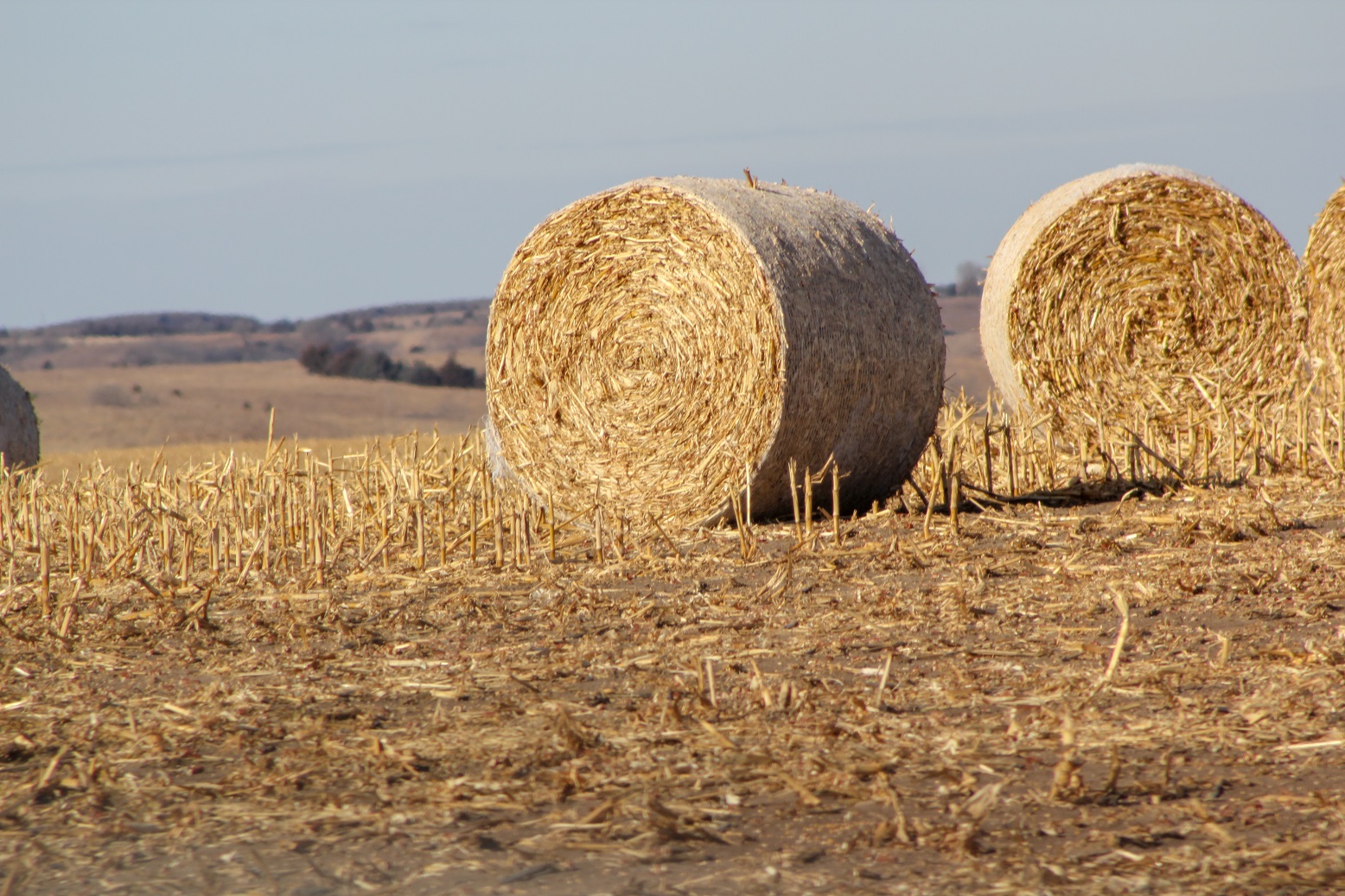Ben Beckman, Nebraska Extension Educator

With dry conditions still plaguing much of the state, baling corn residue following harvest might be an optional roughage source if hay supply is getting tight. What value should be put on baling corn residue?
Figuring out the true value of corn stalk bales can be a bit tricky, but breaking down the costs can help it make sense. First, look at the value of nutrients removed from the field that will need to be replaced by fertilizer. Stalks this fall will contain between $3-5 worth of nitrogen, potassium, phosphorus, and sulfur per ton.
Stalks also provide organic matter and help reduce erosion. We need to account for the loss of these benefits as well. Nebraska research shows that dryland corn yield declines about 2 bushes for each ton of residue removed. Irrigation costs increase similarly to maintain yields in fields when residue is removed, accounting for an additional $10-12 per ton.
Baling stalks is harder on equipment than putting up grass or alfalfa hay. This additional labor and equipment cost comes in at around $20-25 per ton. Adding everything up, we accumulate $33 to $42 in cost per ton of residue removed.

With costs calculated, we have to figure out what a bale is worth. From a nutritional standpoint, corn stalk bales are typically even lower quality than straw. Even if being selective with what we harvest by only baling the 2-3 rows behind the combine, we can only count on around 5% crude protein and up to 45% total digestible nutrients (TDN). With these values, combining stalks with distillers grain in a diet may be the most efficient use.
To find the value, we need to compare a corn stalk/distillers grain diet with what it would be replacing. Dr. William Edwards, Iowa State emeritus ag economist worked on this problem in the worksheet here: https://www.extension.iastate.edu/agdm/crops/pdf/a1-70.pdf. For his example, the original diet consisted of 2.6 ton hay and 0.3 ton dry distillers grain. To add in 1 ton corn stalks, the diet was adjusted by adding an additional 0.22 ton distillers grain and replacing 1.16 ton of hay. With this example, we can use the other two feedstuff values to estimate a value of stalks.
If we put hay at $100 per ton and dry distillers grain at $160 per ton, the stalk value would be 1.16 x $100 (hay value) minus 0.22 x $160 (distillers grain value), which comes out to $80.08 per ton. The stalk and cob in corn residue are unpalatable and will not be consumed unless the bale is ground. Thus to improve feed value, grinding corn stalk bales is common. This cost needs to be taken into consideration and reduces the value to the end user by $10-15 per ton. In the end, this drops our corn stalk value to $67.80 per ton. This value can serve as a breakeven point when deciding if purchasing corn residue bales or traditional hay ration will be more cost effective.

The one factor that is hard to calculate is demand. When feedstuffs are limited, the natural market fluctuations are out of our control. This example can help with finding an approximate break-even point between hay and corn stalk rations and guide decisions on what the most cost effective route for feeding animals this winter is. To account for regional differences, change the values for dry distillers grain and hay to match local prices.
So, is corn stalk harvest worth it? While there are always additional variables and costs to consider, a quick comparison shows that this year with fertilizer prices down, and hay up, corn stalk bales may be a reasonable option to explore.
Sources:
Estimating a Value for Corn Stover, Dr. William Edwards, Iowa State University
Category Archives: Residue Management, Jenny Reese, University of Nebraska – Extension
University of Nebraska-Lincoln
